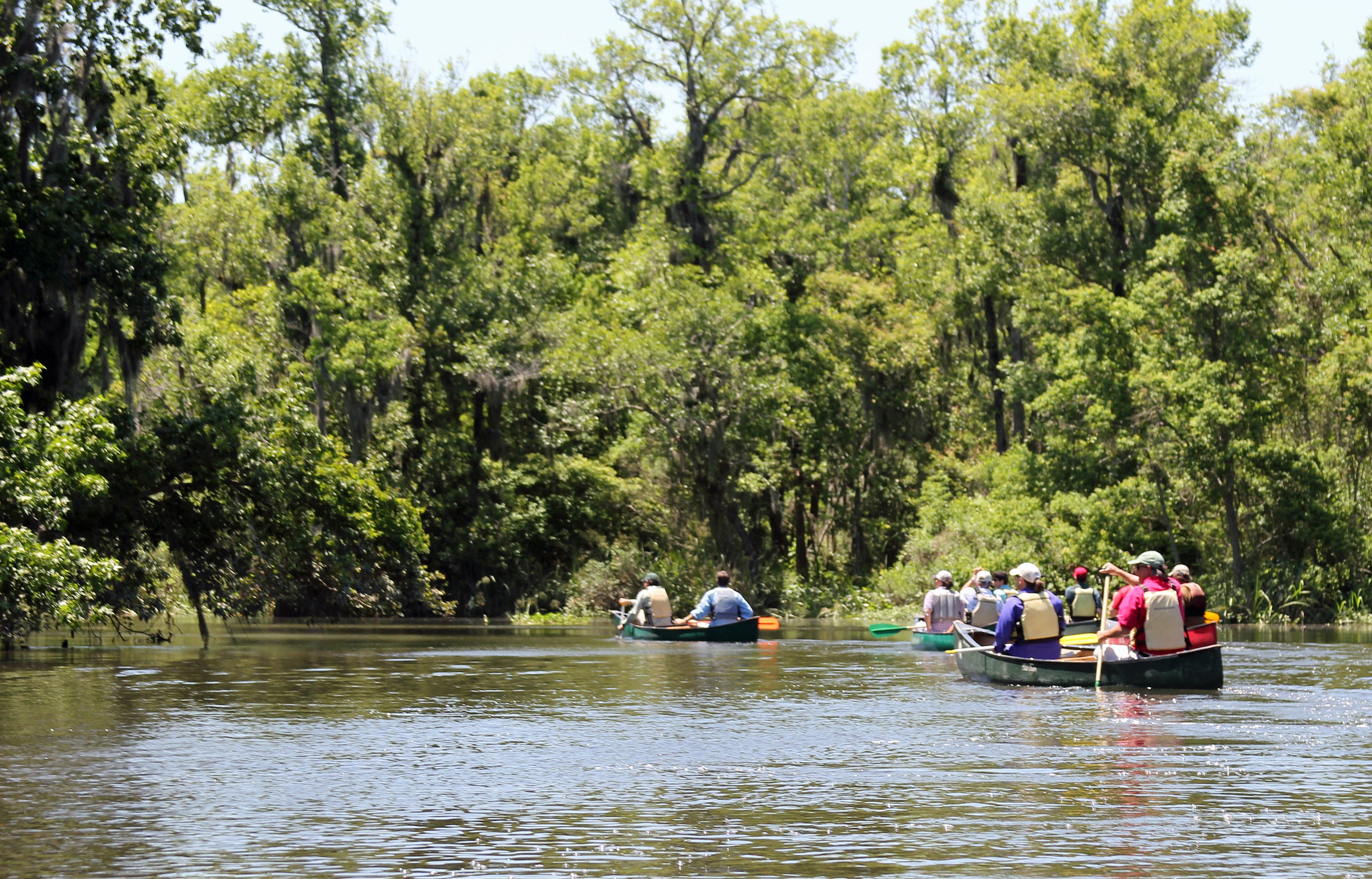By DAVID RAINER, Alabama Department of Conservation and Natural Resources
Once upon a time, a beautiful creek ran through the middle of the city of Mobile. Unfortunately, that creek was neglected during urbanization and the important waterway became an eyesore, not to mention a source of water-quality degradation.
Fortunately, the tide has turned, and the revitalization of the Three Mile Creek watershed has become a priority for a wide variety of citizens, environmental organizations, governmental organizations, the University of South Alabama and the City of Mobile.
Roberta Swann of the Mobile Bay National Estuary Program (MBNEP) met recently with project partners, including the Alabama Department of Conservation and Natural Resources (DCNR), to determine how best to spread the word about the lofty goals of the Three Mile Creek watershed improvement plan.
Those goals include:
- Develop 10 miles of continuous greenway and restore natural channels and establish riparian buffers where possible
- Determine Total Maximum Daily Loads, which is the maximum amount of a pollutant allowed in a body of water during water quality restoration
- Improve the watershed’s water quality standards to “warm water fisheries” status. The current water quality is suitable for agriculture and industry only
- Eliminate all known illicit sources of sewage
- Reduce the amount of trash in the waterways by 75 percent
- Maintain flood protection
- Install environmental education signage at current parks and proposed parks along the waterway
- Control or eradicate invasive flora and fauna where possible
The event that gave all the project partners the impetus to continue occurred in 2011, according to Swann, with the “Clean Up the Bottom” event that invited citizens to help reduce the trash in the watershed.
“We had almost 400 people come out on a cold Saturday morning to help,” Swann said. “Some of the people had historical ties to the area, and about 80 percent of the people who showed up were African Americans.
“There was a lot of excitement. We got into kayaks to clean up One Mile Creek, and we got out into the neighborhoods. People came out onto their porches and asked for bags to help us clean up. It was a great experience frankly.”
With the enthusiasm from the community, MBNEP raised funds to perform a comprehensive watershed management plan. A successful project with the d’Olive Creek watershed in Baldwin County served as a template for the Three Mile Creek plan.
“When we do our watershed planning, it really is community involvement at the local level,” Swann said. “We have 16 community meetings throughout the watershed to find out what was good and bad about the watershed and its biggest challenges.”
The Three Mile Creek watershed plan was published in 2014 with the goal of establishing a trail along the creek from the University of South Alabama to the Mobile River as a key component to reconnect the communities along the waterway.
“What we found out during planning was that people just treated it like a stormwater ditch,” Swann said. “Very few people had any interest in engaging with the creek itself. We felt that was a calling for us to go out into the community and use our watershed plan to educate people on how a watershed functions, first of all, and how the trash aggregates at the bottom of the watershed. I think a key point of education was the trash came from all points along the watershed.”
Swann said the bottom third of the watershed is at sea level and inhabited by mostly low-income residents.
MBNEP enlisted the help of the MLK Redevelopment Corporation to conduct a leadership academy as well as hire a conservation corps of mostly young adults from the area to perform clean-up tasks.
“These were truly urban heroes,” Swann said. “They worked tirelessly. These were people who had never been on a kayak before who were kayaking a mile into the lower reaches of the creek to do invasive species management and trash clean-up. While that was going on, RESTORE grants were being made available. We worked with the City of Mobile to get a grant for the trail.”
Swann said the plan is so much more than the trail. It includes water quality restoration with drainage improvements all along Toulmin Springs Branch, the City of Mobile doing stormwater mapping, and addressing sediment issues in the upper watershed. It also includes opening the historic creek channel for a kayaking loop as well as the acquisition of the wetlands in the area where the creek flows into Mobile River.
“Three Mile Creek runs through the heart of Mobile,” said DCNR Commissioner Chris Blankenship. “It touches so many neighborhoods and a large percentage of the population. Providing outdoor recreational access to all these people right where they live is so important to their quality of life. DCNR is proud to partner with many others to facilitate this restorative effort.”








